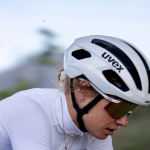Quiksilver International shares closed down by more than a third Friday, four days after it reported it would take another year to reach profit goals outlined in May 2013 because of faster than expected deterioration in the independent specialty channel.
The owner of the Quiksilver, DC and Roxy brands said it needs an additional year, or until the end of 2017, to add $150 million in EBITDA compared with fiscal 2012 due to declines in its Wholesale business. CEO Andy Mooney estimated that 20 percent of ZQK’s small U.S. retail accounts have closed in the last 12 months due largely to rising competition from both vertically integrated fast-fashion retailers like H&M and pure-play Internet retailers. The Wholesale segment generates about 70 percent of the company’s revenues.
“We anticipated some minor erosion of door closures on the fringes,” Mooney said. “We did not anticipate a decline in the store count of that magnitude.”
The same competitive pressures are having a similar effect in Europe, where small retailers are also coping with anemic growth and higher teen unemployment.
The same competitive pressures are having a similar effect in Europe, where small retailers are also coping with anemic growth and higher teen unemployment.
“In apparel, the demand for lifestyle apparel is increasingly being met by fast fashion vertically-integrated apparel retailers at price points significantly below those currently offered in action sports,” said ZQK’s President and CEO Andy Mooney .
The trends caused the company’s Wholesale revenues to fall 15 percent, or by $50 million, to $286 million in the fiscal second quarter ended April 30, compared with the fiscal second quarter of 2013. Total net revenues declined across all major geographies and brands in currency-neutral (c-n) terms. In the Americas, sales were off 16 percent, in EMEA 5 percent and in APAC 3 percent. In Europe, sales declined 2 percent in France, 12 percent in Spain and 15 percent in Germany and increased 12 percent in the United Kingdom and 27 percent in Russia. Emerging markets, where sales increased 28 percent, offered another bright spot. Sales were strongest in Brazil, Russia and Mexico.
ZQK retail, or direct-to-consumer (DTC) revenues held flat at $90 million as comp stores sales at more than 600 store worldwide rose 1 percent. E-commerce sales increased 23 percent to $30 million, or 7.4 percent of sales and were up double-digit in all three geographic regions. That pushed up gross margin 120 basis points (bps), while lower levels of clearance sales to the wholesale channel added another 160 bps, resulting in gross margin of 48.7 percent, up 280 bps. SG&A expenses jumped 500 bps to 52.3 percent of revenues.
A convoluted pricing cycle
In c-n terms, Quiksilver, Roxy and DC sales were off 7, 6 and 19 percent.
Mooney attributed DC’s decline to poor execution in the United States and said he does not anticipate a significant turnaround until Spring 2015 when the brand will launch with reengineered product at lower prices, including its first a line of vulcanized canvas shoes at the $45 to $50 MSRP point. ZQK estimates that DC could double its sales just by winning a 5 percent share of the 200 million pairs of such shoes sold each year.
He said Roxy was selling through well, but has been most impacted by the loss of smaller specialty doors. In the Americas, however, poor sell-through of all the brands’ Spring 2014 lines is hurting sell-in of Fall 2014 lines, particularly with Quiksilver apparel. Mooney said this cycle has become endemic in the highly competitive U.S. and European retail sectors, where vendors and retailers have become accustomed to a model in which vendors charge high initial wholesales prices that result in poor sell through, which leads to high mark-downs, returns and, ultimately, lower wholesale pre-bookings for the next season.
“That process is a very inefficient process for all concerned,” said Mooney. “We want our wholesale partners to experience better sell-throughs than we've had to date and not go through the hoops of asking for mark-down money or shipping products back to the warehouse.”
To break the cycle and boost performance at its Wholesale segment, ZQK has simply opted to lower its initial wholesale prices for Spring 2015.
At the same time, the company is accelerating investment in its direct-to-consumer channels, particularly in emerging markets. To ensure the company meets its EBITDA goal in 2017, Mooney said executives are also increasing their focus on “fashion-right, price-right SMU programs for larger non-core wholesale channels” in North America and Europe as well as mall-based dealers who may be trying to sell a $60 board short against a $20 lifestyle version offered by H&M.
“We don't intend to be at $20, but we probably have to be much less than $60,” Mooney said.
“We don't intend to be at $20, but we probably have to be much less than $60,” Mooney said.















